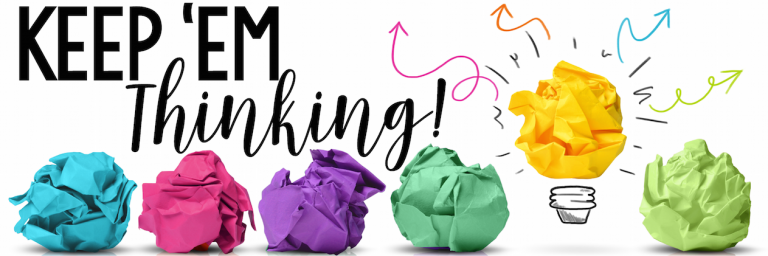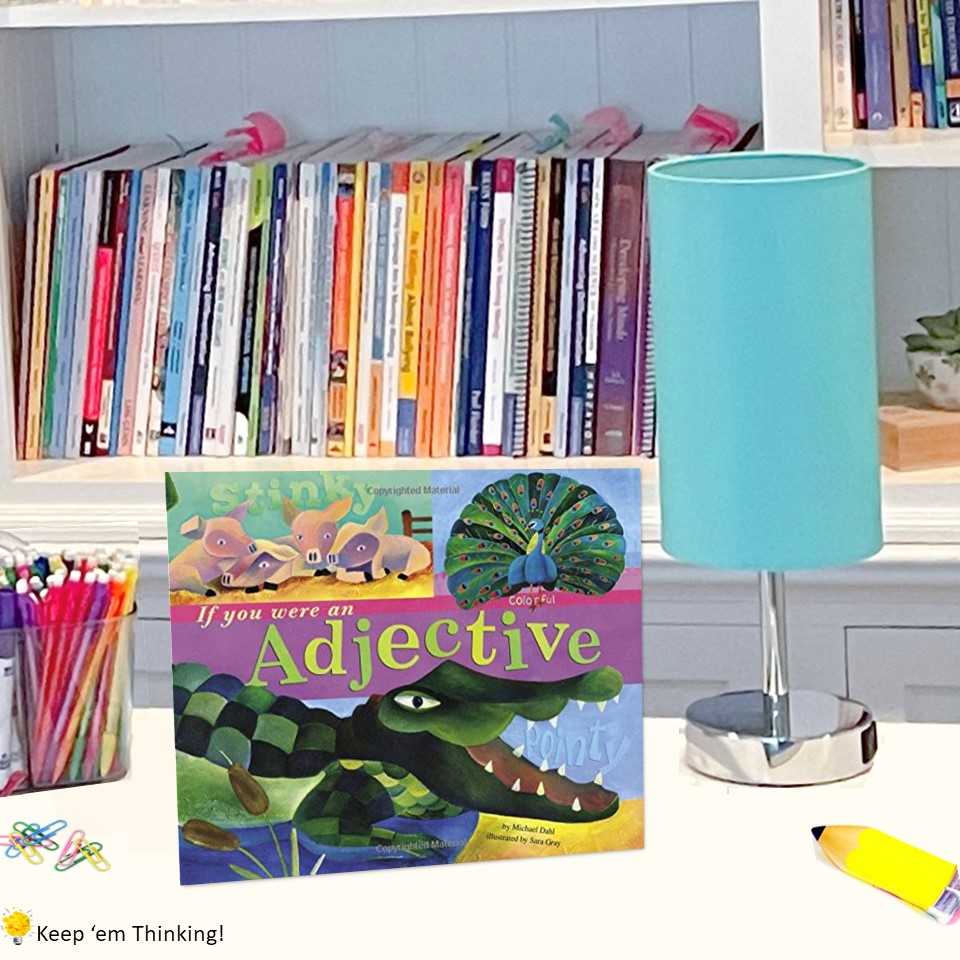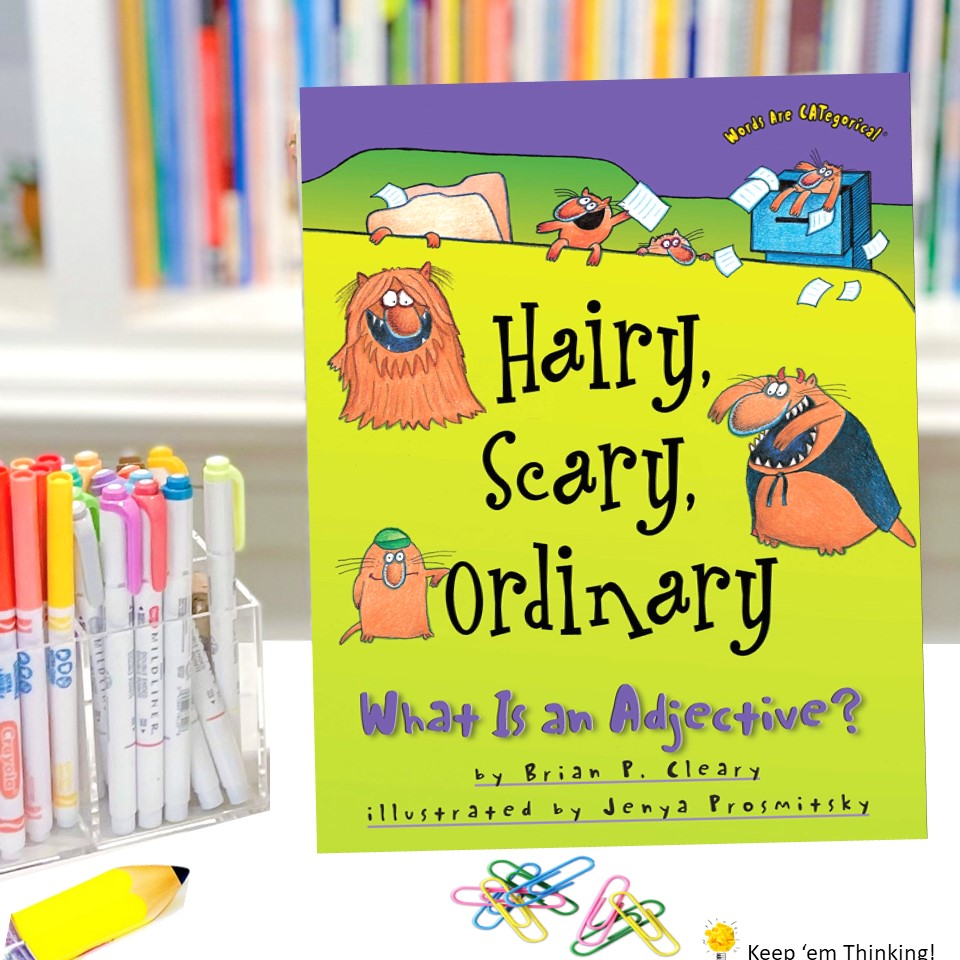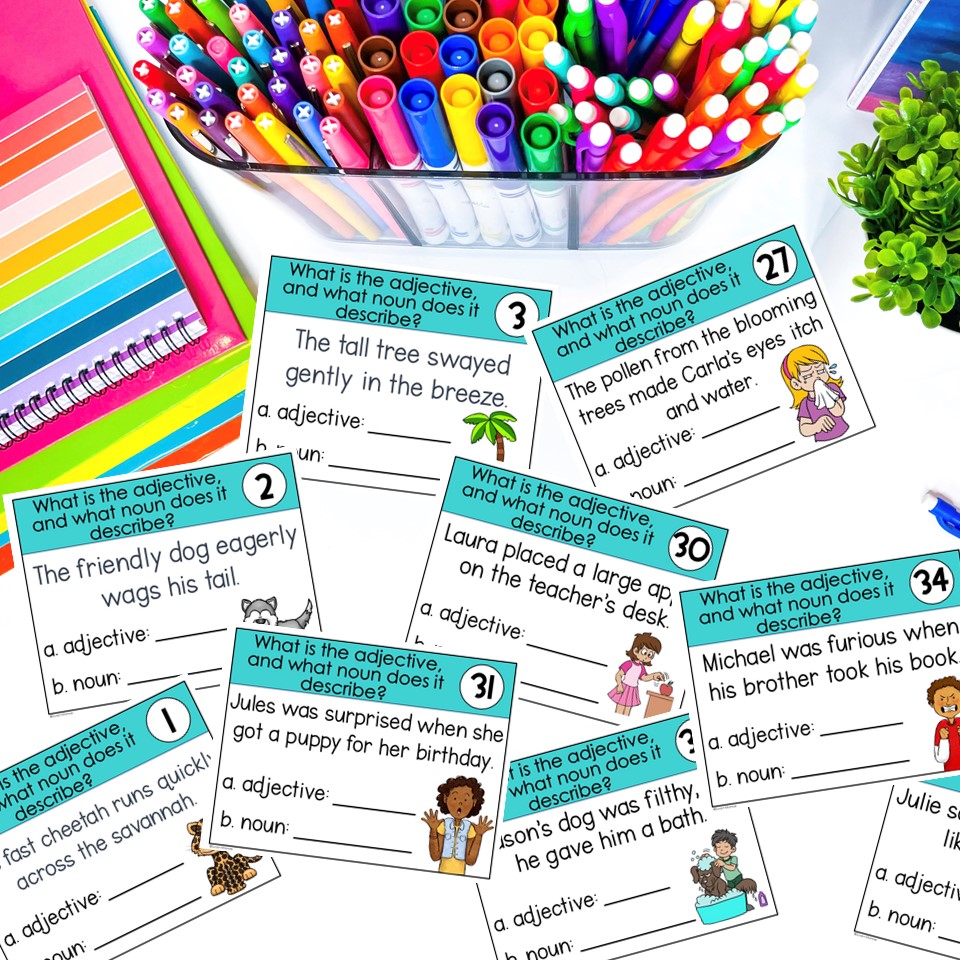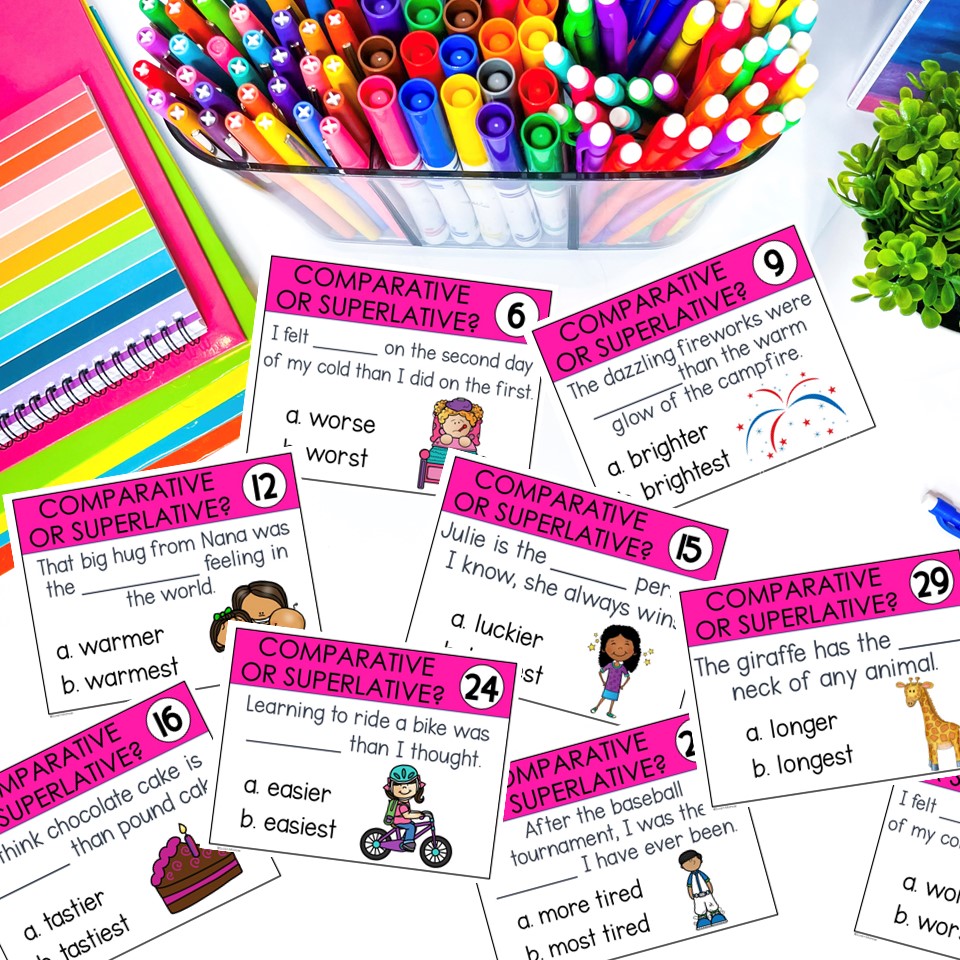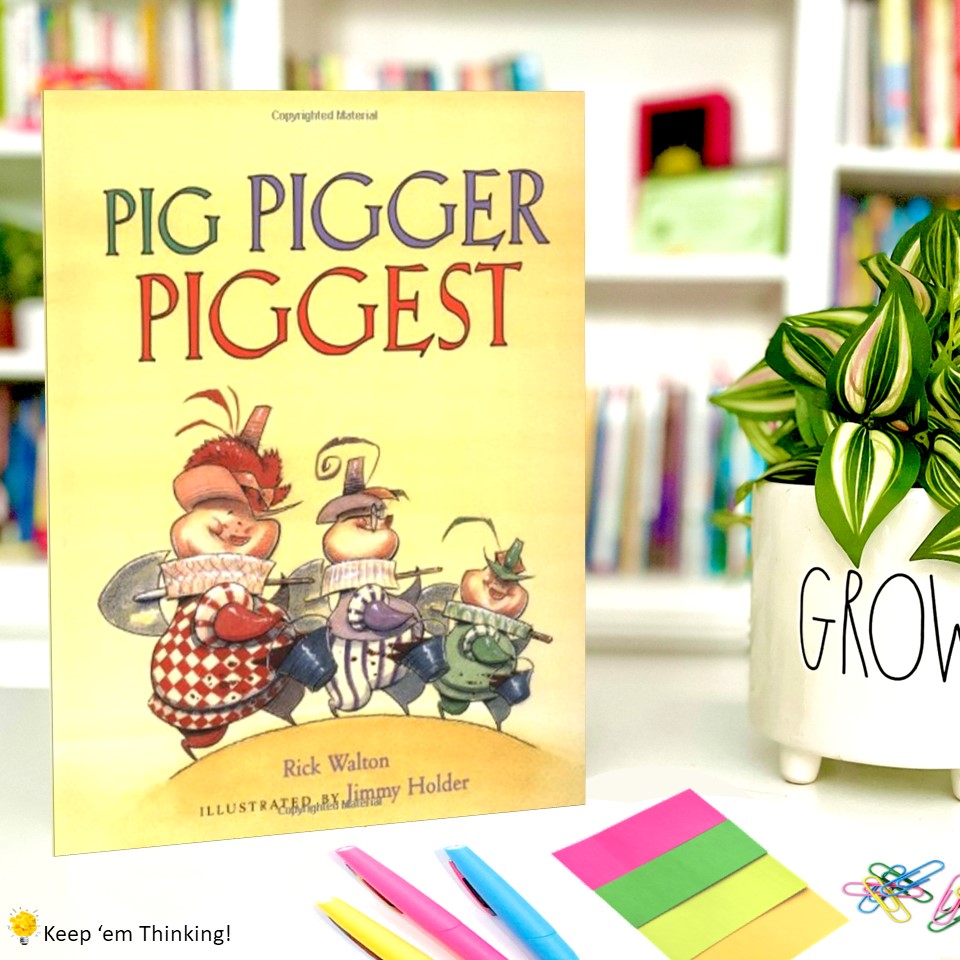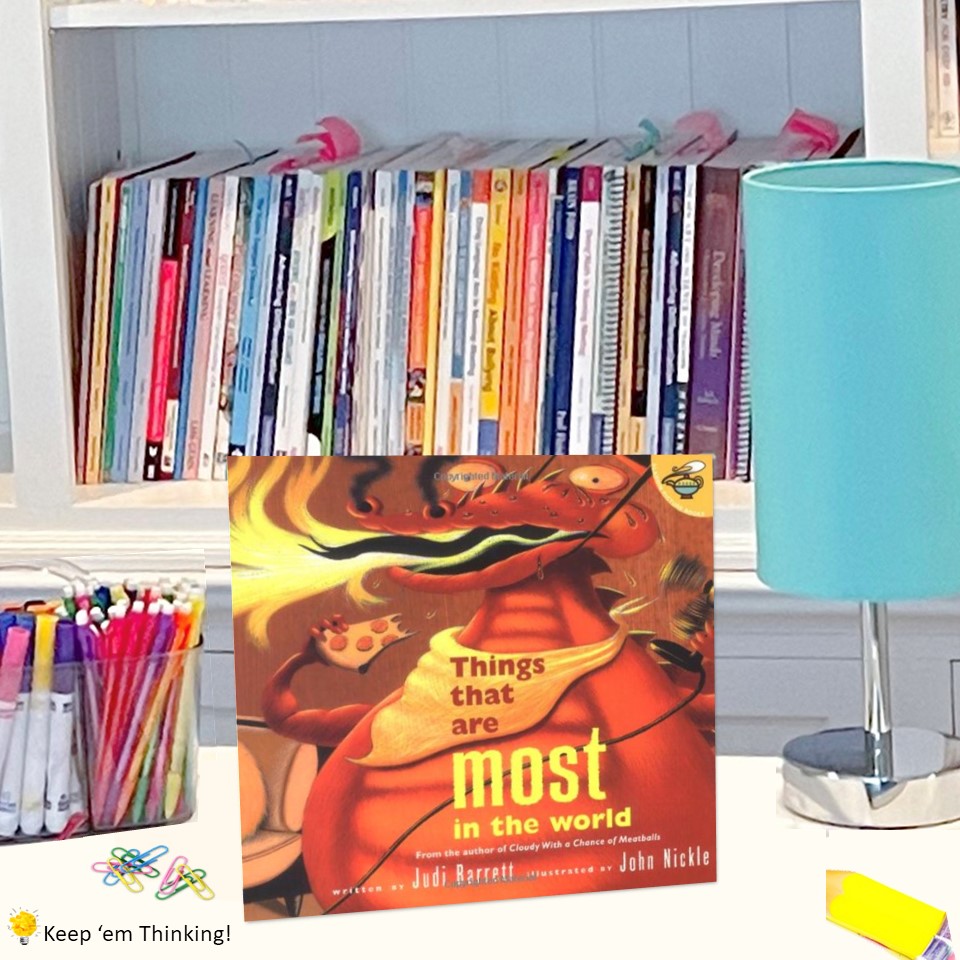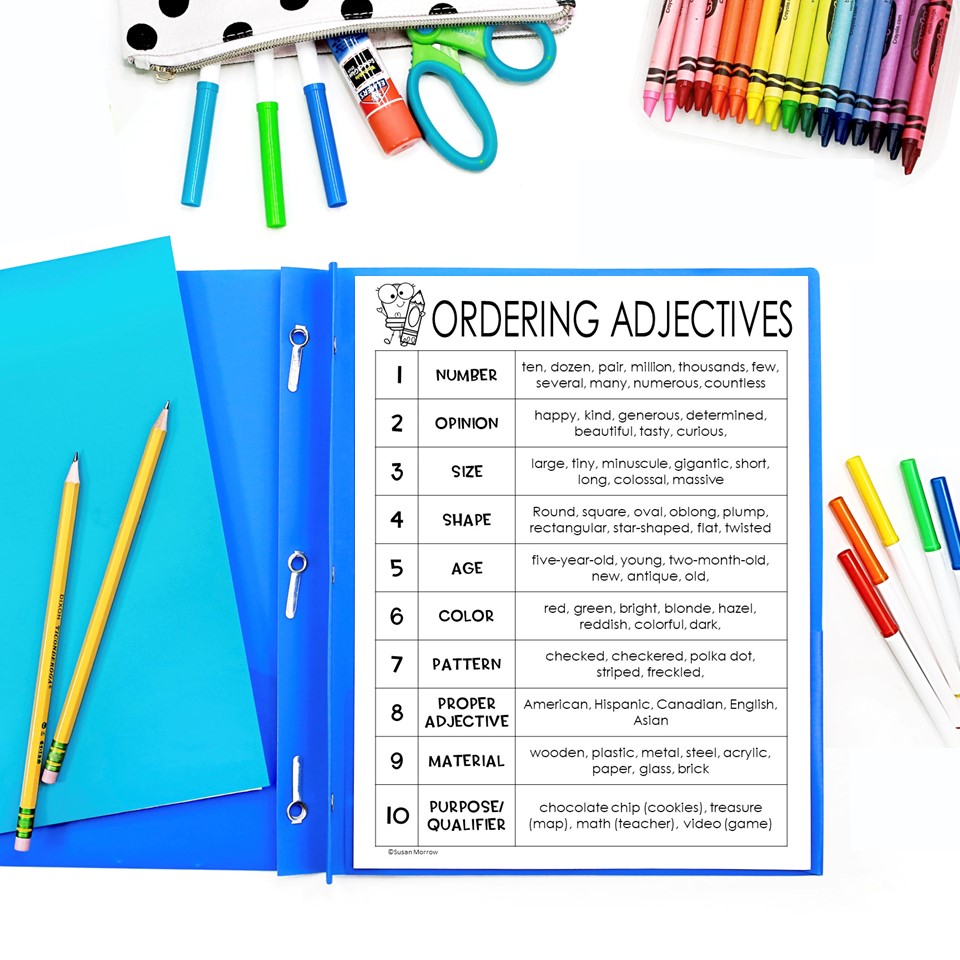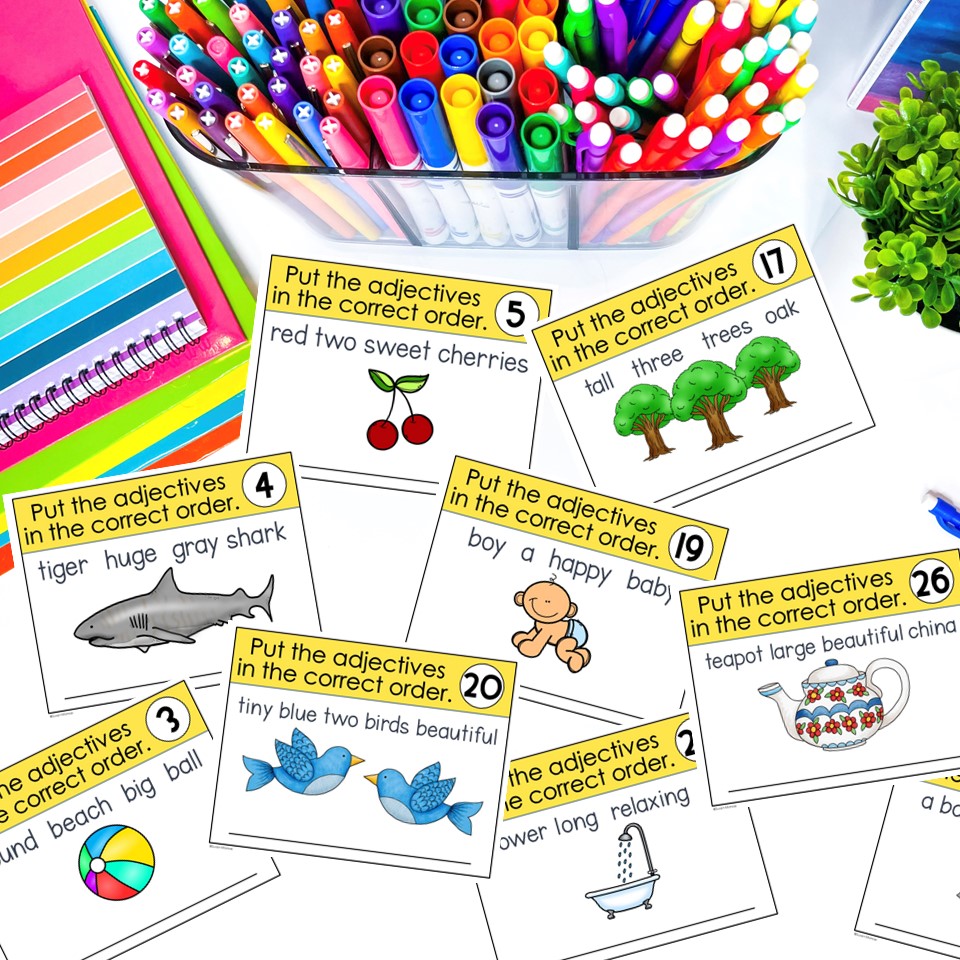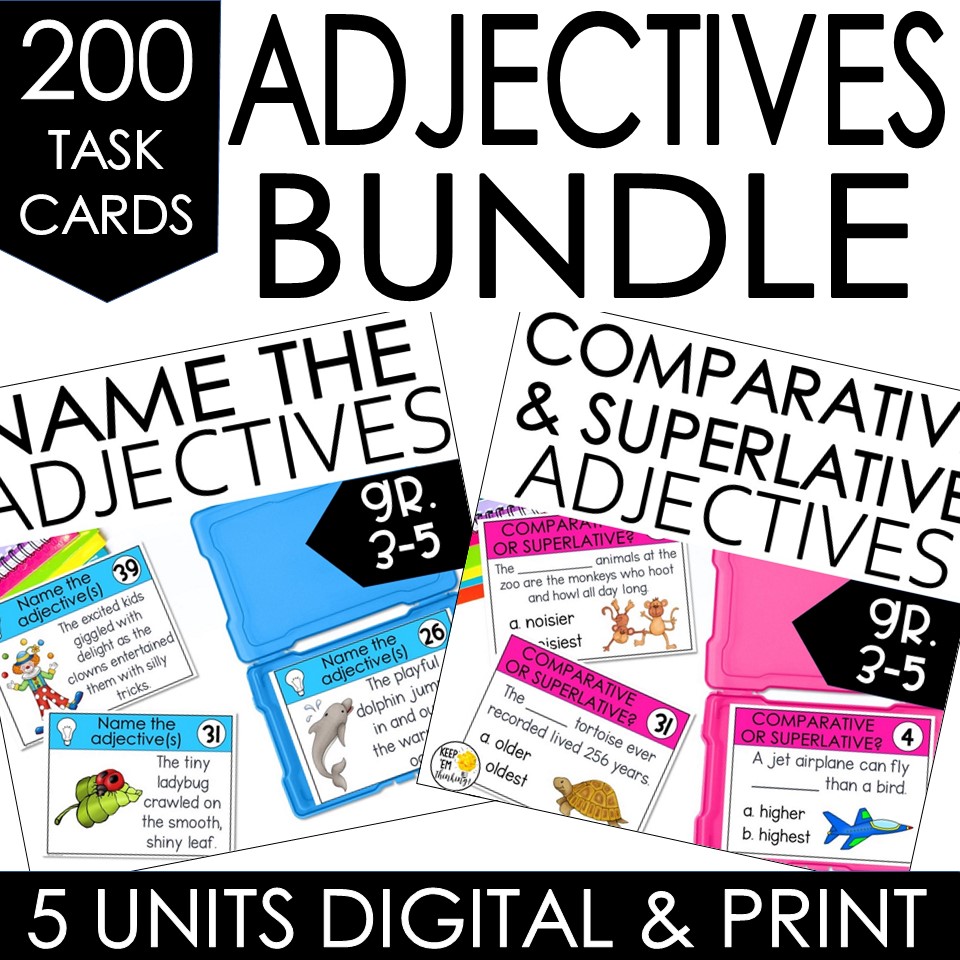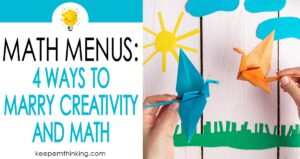We often overlook the power of teaching adjectives as part of writing instruction. But adjectives can turn boring sentences into captivating stories. For students in grades 3-5, mastering adjectives is critical for effective writing. Descriptive words help young writers create interesting stories and express their ideas clearly. Let’s explore why you should teach adjectives and some fun ways to teach adjectives to upper elementary kids.
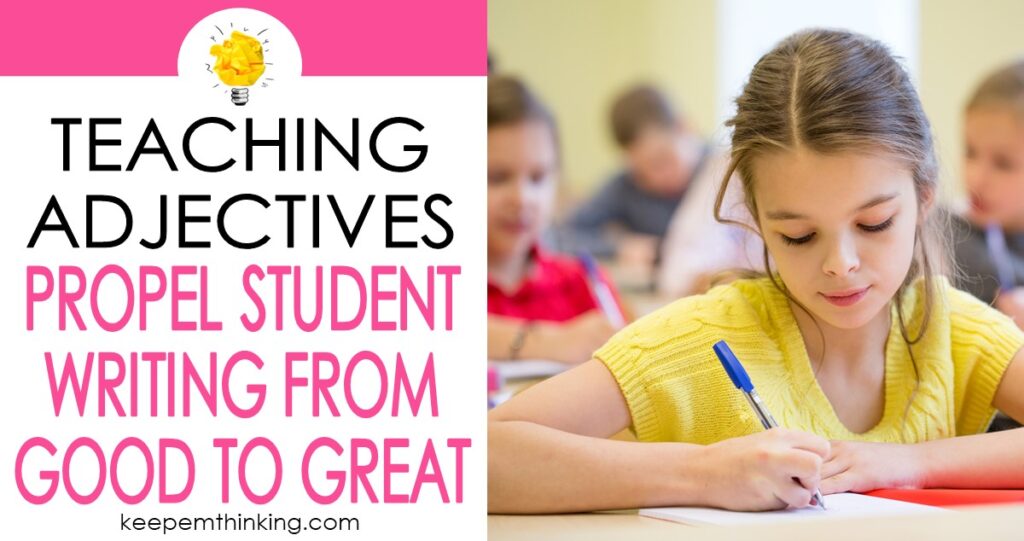
The Benefits of Teaching Adjectives to Upper Elementary Kids
1. Teaching Adjectives Improves Writing Skills
Writing is an art, not just a mechanical process of arranging words. Adjectives are like an artist’s brush – they bring depth, color, and texture to a student’s composition. When students use adjectives in their writing, they can create vibrant imagery with words and give life to their stories. They can turn bland and boring writing into an exciting narrative.
2. Adjectives Make Writing More Descriptive and Interesting
When students have a firm grasp of adjectives, their writing becomes more descriptive and specific. Instead of saying, “The dog ran,” they can write, “The energetic golden retriever sprinted across the green field.” By teaching kids to incorporate adjectives into their writing, students provide richer details allow the reader to actually “see” their story like a movie playing in their head.
3. Teaching Adjectives Expands Student Vocabularies
If You Were An Adjective is a great book and video that introduces some amazing adjectives to your students. Adjectives provide an opportunity for students to enrich their vocabulary. As they learn to select the most fitting adjectives to describe nouns, they explore a wider range of words and gain a deeper understanding of their meanings.
This exposure to new vocabulary enhances their writing and strengthens their overall language skills. For example, instead of using trite adjectives like happy, they can write sentences using overjoyed, delighted, or ecstatic.
Ideas for Teaching Adjectives to Students in Grades Three, Four, and Five
There are so many fun activities for teaching adjectives that you can use with your class.
Have Students Identify and Define Adjectives
I begin teaching adjectives by introducing students to what adjectives are. Hairy, Scary, Ordinary What Is an Adjective? by Brian P. Cleary is one of my favorite picture books for teaching adjectives. Explain that adjectives are words that describe or modify nouns by adding more details and characteristics to them. Provide clear definitions and examples to help students grasp the essence of adjectives.
- Provide a list of sentences and ask students to identify the adjectives within them.
- Create a classroom game where students take turns identifying adjectives from a given text or passage.
Provide examples of adjectives and how they modify nouns:
Another strategy for teaching adjectives is to engage students by providing numerous examples of adjectives in context. Show them how adjectives modify nouns by providing specific details about size, shape, color, texture, and more. Encourage students to identify adjectives in sentences and discuss how they enhance the meaning and imagery.
When teaching adjectives, you need to provide activities where students can identify the adjective in a sentence and the noun it describes. Be sure to engage students in hands-on activities that encourage them to practice using adjectives to describe nouns. Assign creative writing tasks where students can employ their newfound knowledge to create vivid descriptions. Provide guidance and feedback to help them refine their adjective usage.
- Show pictures of objects or scenes and ask students to come up with adjectives to describe them.
- Provide sentences with missing adjectives and ask students to fill in the blanks with appropriate descriptive words.
Teach comparative and superlative adjectives
Once students have a solid understanding of basic adjectives, introduce comparative and superlative forms. Explain that comparative adjectives are used to compare two things, while superlative adjectives are used to compare three or more things. Provide examples and guide students in constructing sentences that demonstrate the proper usage of these forms.
Two of my favorite picture books to teach comparative adjectives are Pig, Pigger, Piggest by Rick Walton, and Things That Are Most in the World by Judi Barrett. Both of these books are highly engaging and use humor.
- Give students sets of objects or pictures and ask them to compare the items using comparative adjectives (e.g., “The red apple is smaller than the green one”).
- Provide sentences or short paragraphs with missing comparative or superlative adjectives and have students complete them.
- Assign a descriptive writing task where students choose a specific object or place and write a paragraph using as many descriptive adjectives as possible.
- Conduct a “Show and Tell” activity where students bring an object from home and take turns describing it using adjectives.
Teach how to order adjectives in a sentence.
Adjectives are written in a specific order in English to maintain clarity and convey information in a logical manner. I always use a chart for students to refer to when learning to order adjectives. You can get a copy of this Ordering Adjectives poster in The Teacher’s Toolbox, my FREE Resource Library.
I like to engage students in a game of Sentence Scramble where they have to unscramble a set of adjective cards and arrange them in the correct order to form meaningful sentences.
In Adjective Chains, you can divide the students into small groups and provide each group with a set of adjective cards on strips of colored paper. There are also blank strips for the students to write nouns, verbs, etc. The students work together to form meaningful adjective chain sentences. Encourage them to experiment with different adjective orders and discuss the differences in meaning and effectiveness of each sentence.
In Adjective Error Analysis, I give the students cards containing sentences with incorrect adjective order, and ask them to identify and correct the errors. Students can have meaningful discussions in groups as they discuss the reasons behind the correct order and the impact of incorrect adjective placement on sentence meaning.
For fun, have the kids create sentences and exchange them with others for analysis and correction.
Use adjectives in different types of writing
When teaching adjectives, you need to provide examples of how adjectives are used in different writing genres. Show examples of descriptive writing, persuasive essays, and narrative storytelling where adjectives contribute to the overall impact of the piece. Encourage students to experiment with incorporating adjectives in their own writing across these genres.
- Assign a writing project for each genre and encourage students to incorporate adjectives appropriately to achieve the desired effect.
- Provide samples of descriptive, persuasive, and narrative writing and highlight how adjectives are used to enhance each genre.
Final Thoughts

As educators, we have a unique opportunity to nurture our students’ creative writing abilities. By emphasizing the importance of adjectives and teaching them effectively, we can directly impact their success both inside and outside the classroom.

All of the adjective task cards shown in this blog post are from my Teachers Pay Teachers Store. You can purchase the individual sets of task cards, or the bundle of 5 adjective task card sets.
PIN IT FOR LATER

